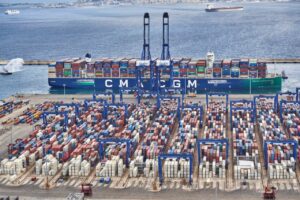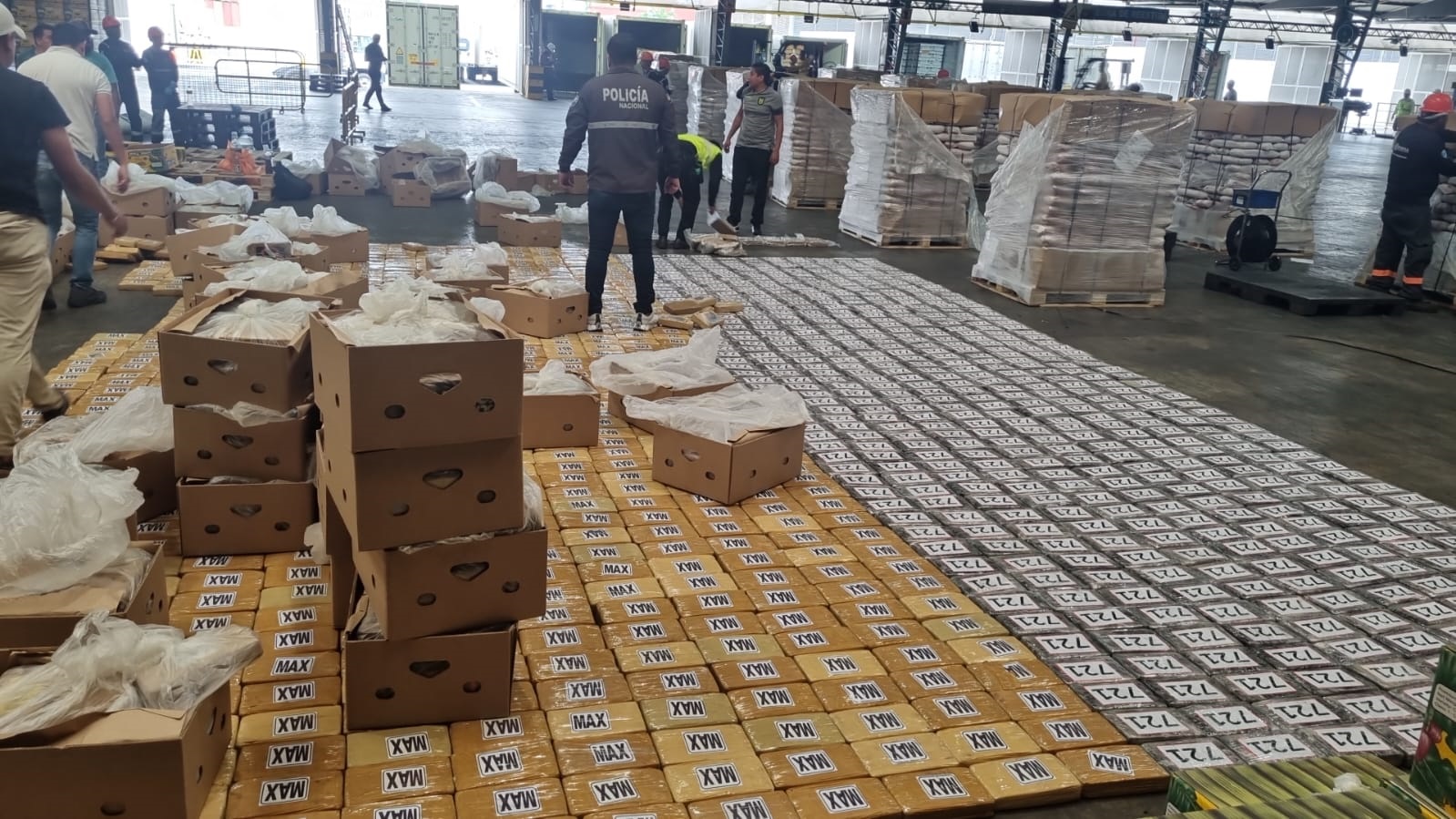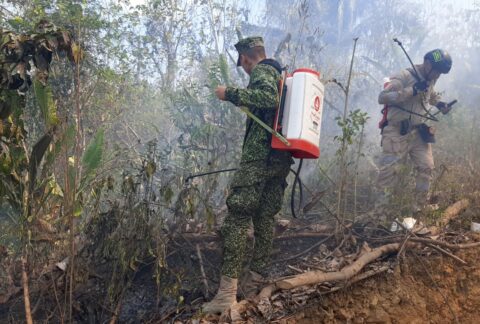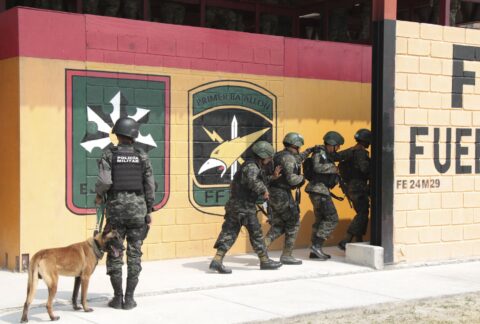Europe is suffering a flood of cocaine shipments from Latin America into its ports, while seizures by security authorities are reaching record levels, reported InSight Crime, an organization dedicated to the study of organized crime in Latin America and the Caribbean.
“In Europe there is a market that demands cocaine specifically, and the only region in the world that produces cocaine is Latin America,” Carolina Sampó, coordinator of Argentina’s Center for Studies on Transnational Organized Crime, told Diálogo on September 18. “That production is concentrated in Colombia, Peru, and Bolivia.”
On August 10, for example, Netherlands authorities found more than 8 tons of cocaine in the Port of Rotterdam, in a container of bananas from Ecuador — a new record for this port. During July, authorities found 10 tons of cocaine in Hamburg, Germany, the second largest shipment ever detected at this port to date.
Authorities in Italy seized the largest cocaine shipment ever detected, 5 tons. In Antwerp, Belgium, authorities seized 6.8 tons of cocaine, one of the largest seizures in the country’s history.
Recently, Spain’s National Police and the Tax Agency, during Operation Nano, seized more than 9 tons of cocaine in the Port of Algeciras, in southern Andalusia, making it the largest seizure of the drug in Spanish territory, Spanish daily El Mundo reported on August 25.
The shipment was discovered in a container with bananas from Ecuador bound for Portugal. The investigations began in July, when law enforcement officials learned of a criminal network that was in charge of supplying cocaine from South America to Europe, entering through the ports of Algeciras and Vigo. Authorities located a company dedicated to the international banana trade, in the Ecuadorian town of Machala.
“The dynamics of the increase in cocaine seizures may be related to the growing importance of trafficking routes, which are moving into new geographical areas,” Yulia Vorobyeva, a professor at Florida International University and an expert on illicit markets, told InSight Crime in a report. “We see different indicators: the prevalence of cocaine in wastewater, retail prices, purity level, and drug treatment data.”

Cooperation between state agencies and international law enforcement bodies is key to combating drug trafficking. For example, the police of Spain and Serbia, with the collaboration of the Spanish Navy and the police of Portugal, Slovenia, Croatia, Brazil, Poland, France, as well as the United States Drug Enforcement Administration (DEA) and the Maritime Analysis and Operations Centre Narcotics (MAOC-N), based in Lisbon, dismantled a criminal organization of citizens of Balkan origin, the Spanish Ministry of the Interior reported on September 1.
The group was involved in the introduction and distribution of cocaine into Europe from South America by sea. Specifically, they were intercepted carrying 2,700 kilograms of cocaine aboard a sailboat in international waters near the Canary Islands.
“It’s important to carry out operations to combat organized crime and drug trafficking,” said Sampo. “The only way to fight them efficiently is transnationally and that requires the cooperation of multiple actors. Of course from all the countries involved, but also from the private sector and civil society. Only in this way is it possible to think about cutting off the flows to prevent illicit markets from continuing to operate.”
On June 26, the United Nations Office on Drugs and Crime (UNODC) World Drug Report 2023 warned that the supply of illicit drugs continues to reach unprecedented levels and the increasingly agile networks of traffickers exacerbate the converging global crises and pose a challenge to health services and police responses in all countries.
“Latin America is awash with cocaine, which allows for more actors to be involved in the export of the alkaloid and enables some criminal organizations to position themselves as more dominant than others,” Sampo said. “The distribution of cocaine in both Europe and the Middle East is handled by European organizations, in line with the Albanian and Italian mafias.”
Sampó stressed the need to develop a regional approach, allowing all countries to attack and prosecute these organizations in the same way, in order to avoid the balloon effect.
“The ideal is to establish and deepen efficient cooperation mechanisms between states through their security and intelligence agencies, to prevent criminal organizations dedicated to drug trafficking from continuing to profit in the Americas with their criminal maneuvers in the export of drugs to Europe,” concluded Sampó.









